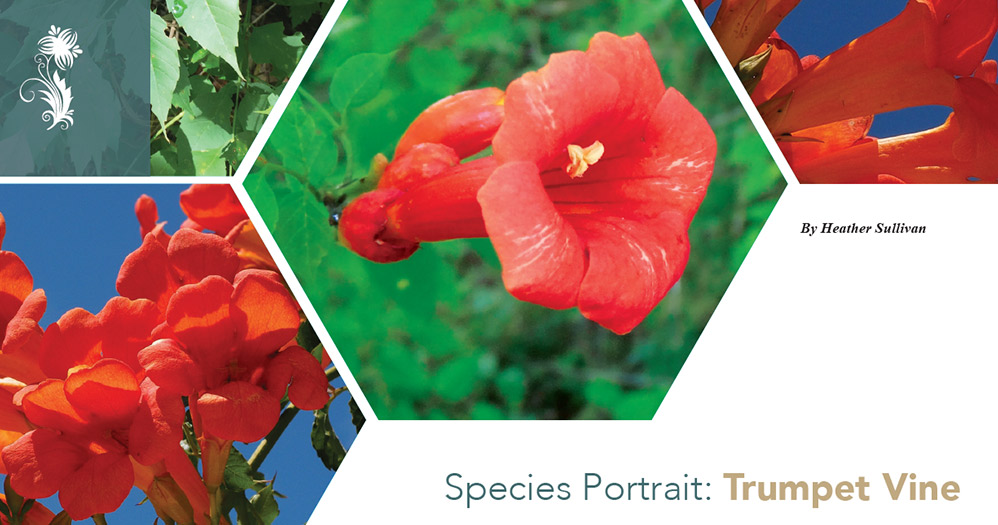Species Portrait: Trumpet Vine
6/6/2018 10:18:36 AM
By Heather Sullivan

Trumpet vine, trumpet creeper, cow-itch vine, devil’s shoelaces, hell-vine ... all are names for this native plant.
The brilliant, red-orange, tubular flowers are the origin of the name most associated with this plant: trumpet vine. The flowers grow in clusters at the tips of the new growth of vines and bloom from June through August.
Many people associate any red flower with ruby-throated hummingbirds, and, in fact, the trumpet vine has adapted to be pollinated by this species by having high levels of nectar and tubular flowers. When the trumpet vine interfaces with humans, it has been described as aggressive, thuggish, and destructive. It climbs using aerial roots, which can damage siding on homes or sheds. Once it finds its way into a garden, it is nearly impossible to eliminate.
Also, some people react to the plant that is similar to poison ivy, which is the main reason it is often called cow-itch vine. Additionally, in the past, milk taken from cows that had eaten the vines would sometimes cause rashes on those who drank the milk.
Devil’s shoelaces and hell-vine refer to the trailing habit of the vines. The deciduous, woody vine occurs on disturbed sites, such as railway embankments, fencerows, overgrown fields, along wooded edges, and in forest plantations, where it can become aggressive in the understory by forming dense colonies.
White-tailed deer heavily browse new growth of the leaves during the spring and summer. The vine is host to two moth caterpillars: the plebian sphinx and the trumpet-vine moth. The plebian sphinx caterpillar feeds on the leaves and stems of the vine, while the trumpet-vine moth prefers to burrow into the developing cigar-shaped fruit. The fruit contains hundreds of papery-winged seeds, which will disperse by the wind to new areas. Historically, settlers would use boiled extracts from the roots to break a fever. The powdered roots could also be used to heal wounds.
Heather Sullivan is a Conservation Resources Biologist and Curator of the Herbarium Collection at the Mississippi Museum of Natural Science.



